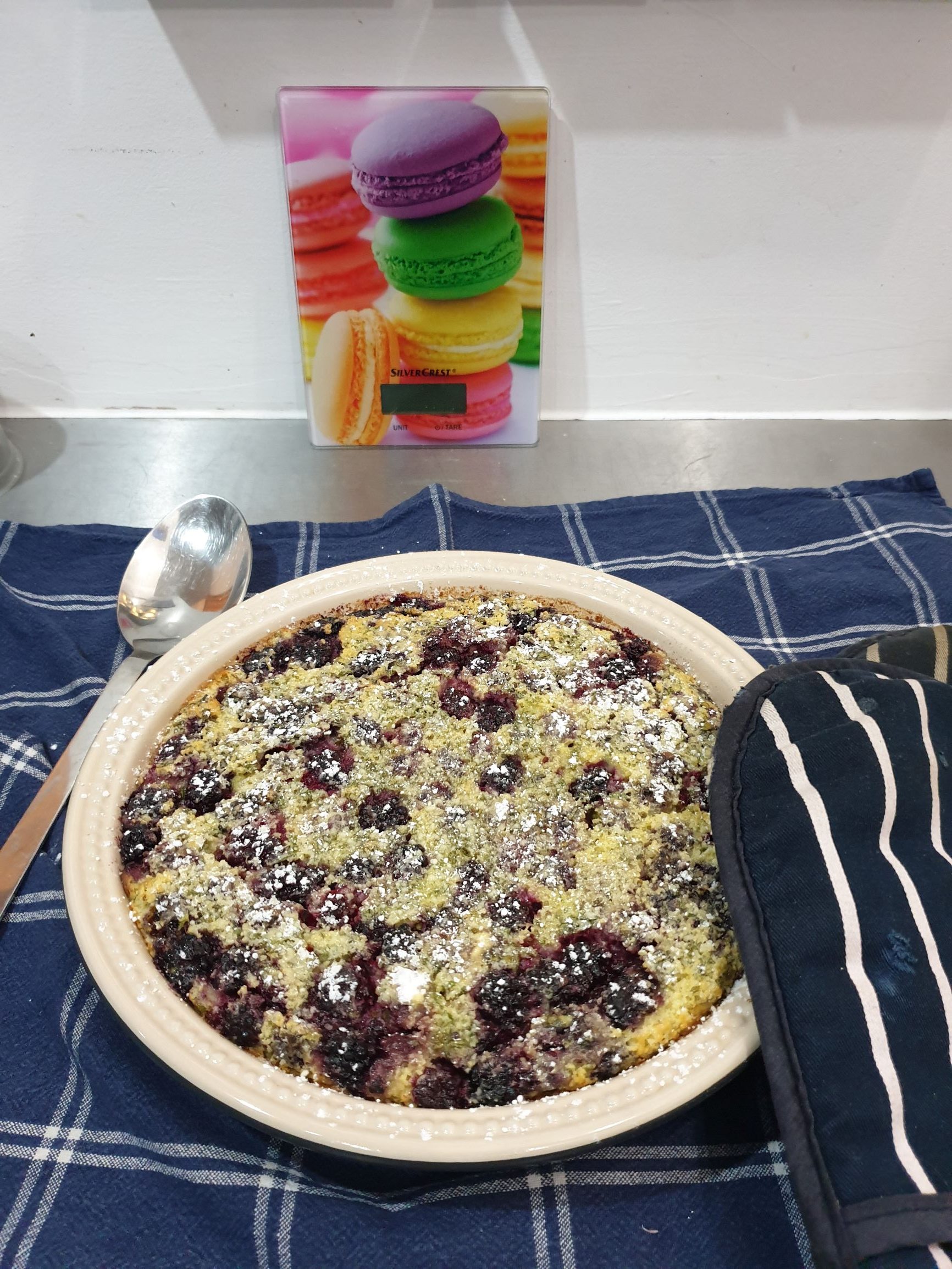What is Clafoutis?
Clafoutis is French dessert usually made by arranging black cherries in a buttered dish and pouring batter over the top. Some recipes include a raising agent, resulting in a lovely sponge-like texture, but traditionally it is a dense mixture like a batter. Think toad-in-the-hole as a dessert, but in a good way!
Originating from the Limousin region in south-central France, its name derives from the Occitan verb “clafir”, meaning “to fill”, i.e. batter filled with cherries. Occitan is a romance language of the region. It was common practice to leave the stones in, both for ease of cooking and to maintain the texture of the cherries, but nowadays many prefer to destone them before baking.
Baking
The clafoutis-making process is straight-forward, the main difficulty being working out how to remove the stones from the cherries. Cherry pitters do exist, but in the absence of such an appliance, using tinned ones is an option. Alternatively, you could do what I did, which was place a cherry over the rim of an empty wine bottle and use a chopstick to push out the stone. Simples.
Overall, it’s a very uncomplicated recipe to follow, requiring little skill. However, you are warned not to overbake the dish and that underdone is preferable to overdone, so I recommend keeping an eye on it during the final minutes.
Translation
A very specific type of dish is recommended for baking the clafoutis: a “moule en céramique à clafoutis rond”, i.e. a round ceramic clafoutis dish. As the clafoutis is not flipped, but served straight from the dish in which it is baked, it’s best to use your fanciest flan dish, if you have one. One with a decorative trim would work a treat. I only had a lowly pie dish but attempted to make up for my poor presentation by sprucing it up with some icing sugar sprinkled on top.
The mixture is like a batter and that’s how I’ve referred to it in my translation. The French refers to it as a crème, or uses the vague reference “préparation”, but the end product was definitely more akin to a toad in the hole batter.
Overall
My general impression was that it was a pleasant, simple dessert to make. It won’t set your world on fire, but it was nice to try something traditional and different. I was inspired to make my own version using blackberries, since they are in season and as an added bonus, no destoning required! I jazzed up the batter with some lemon zest and, wait for it…basil! Apparently basil pairs well with blackberry, but I remain unconvinced, given the savoury aroma after baking. Still, it’s nice to get creative and try something new.

See here for more #ThatTranslatorCanCook creations.


